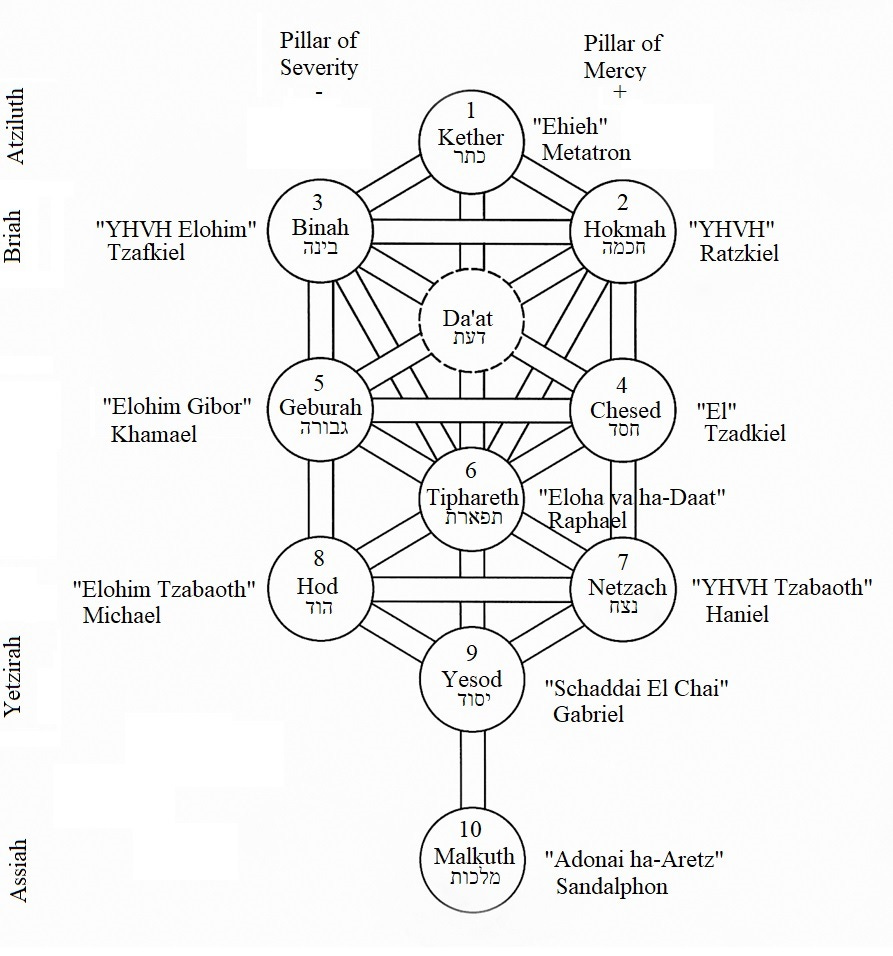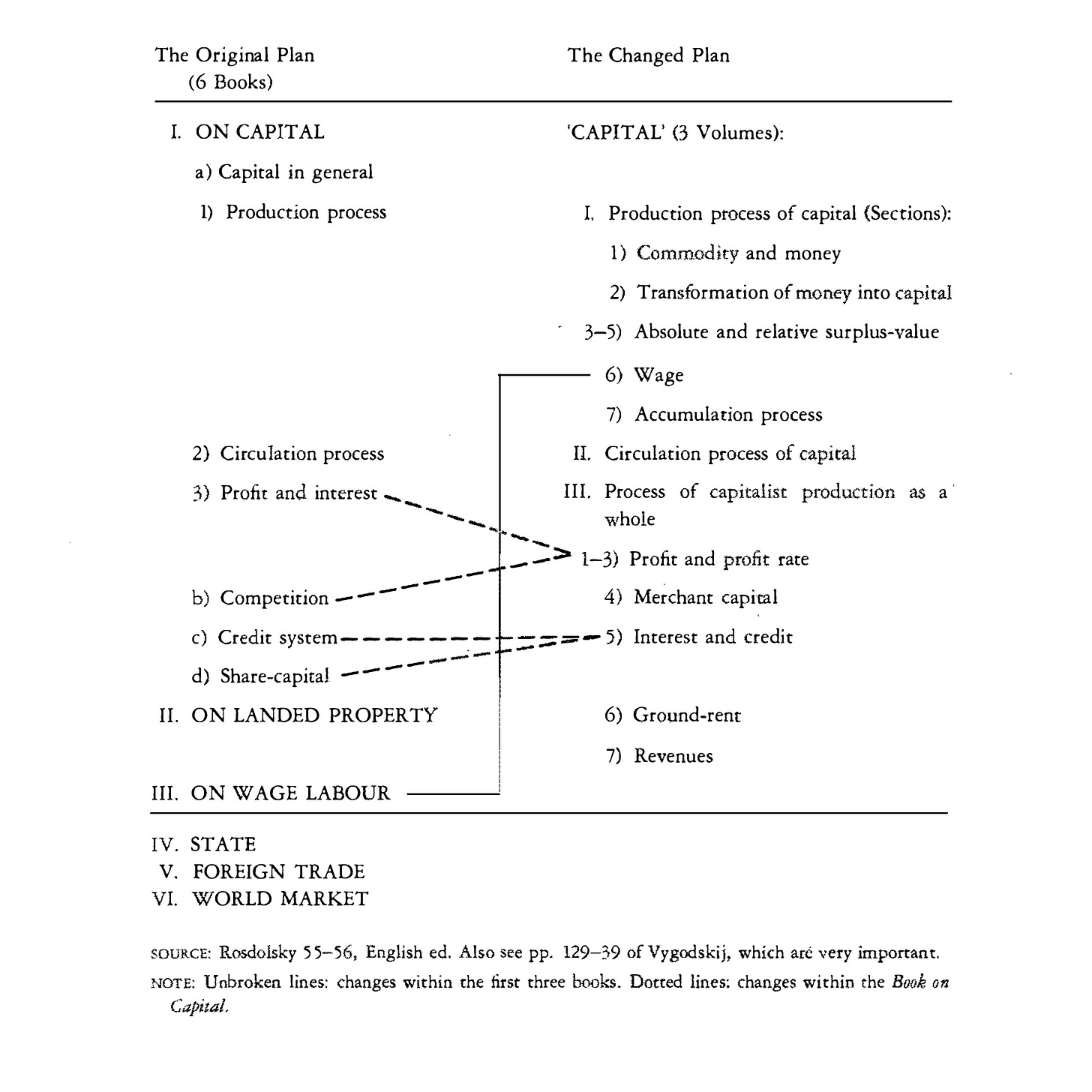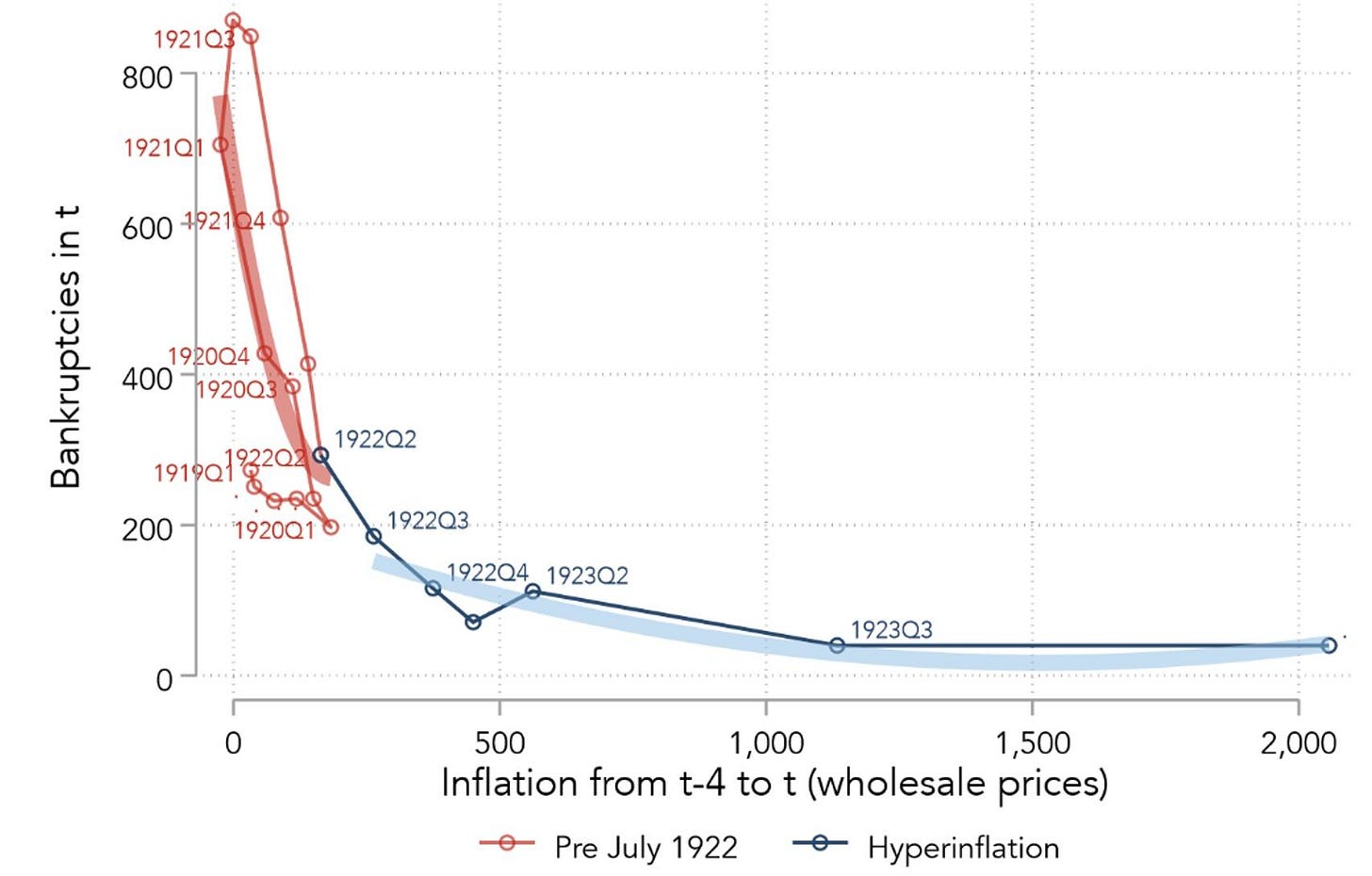What is the value of a dollar? Supposedly, a dollar today is worth more than a dollar tomorrow. To arrive at that conclusion, the whole of money as a singular entity would need to continue splitting in such a way to guarantee more dollars in the future, thus reducing the value of each individual dollar apropos to a larger set. If money as a totality is perpetually splitting, then it follows that the economic power of the individual dollar proportionately decreases as the supply of dollars increases1. This split allows the continual exchange of money, and it is through the process of exchange that gives money the appearance of a state of becoming, thus allowing it the appearance2 of life. Our present inquiry is on the spirit underlying that life and its function, what we shall henceforth call the egregore of money.
In Egregores: The Occult Entities That Watch Over Human Destiny, Stavish defines an egregore as an
autonomous entity composed of and influencing the thoughts of a group of people; it is also the home or conduit for a specific psychic intelligence of a nonhuman nature connecting the invisible dimensions with the material world in which we live.3
In other words, an egregore is like a bridge or a tunnel; it permits different levels of reality to enter a specific geography in the shared physical world. Following from this definition, the pathway of an egregore is a necessarily transcendental one as its linkage is between worlds. This does not specify the order of a given world4, but instead denotes a degree of difference between worlds that the egregore in function connects. Kabbalah is one such study of other worlds5, using the glyph of the Tree of Life as a roadmap to other planes of existence, beginning in the tenth sephirot of Malkuth, which we inhabit as the physical world6.
On the Kabbalist view, the nature of creation is one of emanation, remarkably similar to, but more robust than, Plato’s theory of Forms7. Roughly, the sephirot of Kether is the godhead of creation8, the first point of awareness against a backdrop of infinite Nothingness. The point arises from Nothingness as distinction, an awareness of its antecedent Nothingness. Kether is this reality as awareness at its least dense, the I am that I am, and its subsequent outpouring is a series of emanations that hone and refine awareness into creativity, gradually hardening in density until giving the appearance of solid matter in the physical world of Malkuth. Practice of the Kabbalah provides a considered pace by which meditative practices slowly acclimate the mind to higher worlds in a prescribed order. The difficulty presented here with egregores is the most strenuous exercise without any warmup; it is an autonomous entity that continually executes its function often without discrimination, and it is in this blindness that an egregore can inflict egregious psychic harm.
The consequences of injury sustained by unprepared exposure to other layers of reality are heavily-varied. Balance is disturbed when not readily prepared for, the same principle as to why one pulls a muscle after working it too hard. The money egregore grows by causing splitting; the perpetuation of its exchange is its life force, and the balance of its host is subservient to this function. It is the viral nature of money as an entity motivating people to participate in an economy as the vehicle for its sustenance. Advertisements as the incubators of false desire9 toward commodities are a manifestation of the function for money to continue its own life. It removes a person from their true Will by implanting desire in people as a form of psychic injury, and this desire is represented by an image that grants appearance, and the obtainment of the object of appearance enforces social relations10. Inattentive to the inner tension making a person human, one is prone to repressing emotions11 and acting them out unconsciously in a mode of bad faith12 disharmonious to one’s true Will under the money egregore.
The function of money as hollowing out of a person’s true Will and replacing it with desire is in effect a duplication of the aforementioned process of splitting. Economically, money fractures itself as totality, creating more dollars for circulation13 to continue and then in turn fracturing the wholeness of a human being to create more consumption. Once the function of money has developed power in one site, it copies this function to reproduce it elsewhere14 like a cell splitting, rendering the state of capital in society as one ever-encroaching on the life of the individual. Yet, the social appearance granted through the purchase of commodity is an abstraction15, just as the social relations enabled through capital are abstractions. This development is scalar as the the progressive sublation of organic life by abstract capital, the more life itself acts in an appeal to images as an imitation abstraction. Here we see an inversion of Leibniz’s monad1617: when all life becomes all-encompassing abstraction simultaneously reflecting upon itself, capital has completed its self-deification in a perverse Great Work. The spiritual ramifications of this are life imitating an image of itself, where life, overclocked by the influx of psychic data streamed in from the money egregore, ceases to flow organically, pulled like a muscle
Despite the soulless nature of Marxist philosophy where a person is defined through social relation and not individuation, a Marxist analysis of money can be read as the vampirism of the money egregore infecting mankind. In the Grundrisse, Marx writes
These objective dependency relations also appear, in antithesis to those of personal dependence (the objective dependency relation is nothing more than social relations which have become independent and now enter into opposition to the seemingly independent individuals; i.e. the reciprocal relations of production separated from and autonomous of individuals) in such a way that individuals are now ruled by abstractions, whereas earlier they depended on one another.18
Marx is directly commenting on the shift of human interdependence to human dependence on abstraction19. A narrative of money as an objective feature unto human society is deftly weaved into the rise of social relations as gaining an appearance so as to be culturally observed. This is why Marxist doctrine is one of dialectical materialism, in which change is observed through the history of human society as a series of events upon the physical world20. In the Grundrisse, Marx analogizes money to that of a god21, stating, “[m]oney is therefore the god among commodities22,” but it is my contention that this analogy is actual. The relationship in the Grundrisse is that of a duality; the money egregore grants divinity to commodities as a Form, and the commodities reciprocate as physical idols unto this deity.
This difficulty of this relationship is in how it exists both physically and spiritually. To further consider physical consequences of the money egregore, let us examine what happens to an economy in a period of hyperinflation. The go-to case study is the Weimar Republic, the deranged life of German currency from 1921 to 1923 after the first World War23. The gold standard24 was suspended, as in, linking the value of print currency to the supply of gold relative to the world supply of gold, for Germany to borrow funds for World War I in anticipation of victory25. The country’s loss in the war created debts it could not repay, leading to extreme volatility of their currency. By 1923, foreign soldiers occupied the country to secure reparations owed from wartime losses26, which Germany attempted to remedy by printing money at a rate that effectively erased its value.
Here is the money egregore at work. Germany could not follow through with its plan to impose reparations upon countries they defeated in World War I because they lost in this war; this means a condition for the future projection of the egregore of the German mark was not met, and in turn, the egregore could not be maintained with stability. This is further compounded by the inconsistent actions of the government, with some actors actively trying to crash the German mark27. The lack of this foundation can be seen in the Marxist term of lacking a base28, and this same concept can be applied to the non-physical dimension of money. With no foundation, chaos ensued, and it led to conflict in members of government and in relations of government to citizenry, and it is this conflict that is symptomatic of the physical-spiritual dual life of the money egregore, affecting people in their minds and in their wallets.
As I have previously shown, this duality exists in a state of perpetual splitting. There is no fixed A and B, there is a constant reproduction of image mirrored in the physical world as the constant production of commodity for consumption. The incongruity of production and reproduction existing contrary to the hermetic principle of “as above, below” is part of how the money egregore exists on multiple planes of reality; it necessarily must constrain and invert that which it feeds upon precisely because it is a parasite that hollows out spirit through a mental overtaking of the physical world. Marx misses this in his commitment to materialism, providing a guiding analogy that only accounts for money as a feature of capitalist culture29 without understanding its spiritual implications as existing on multiple planes of reality in a slanted relationship. In other words, for Marx, money directs human behavior30, and it is this direction that continually reproduces dualities.
Baudrillard’s concept of hyperreality becomes another useful tool for analysis here. In Symbolic Exchange and Death, Baudrillard advances the argument that a faux reality is imposed on top of lived experience as a series of images and signs lacking an external referent, in other words, experience is mediated through simulations. The prerogative of capitalist organization is inherently unnatural31 for Baudrillard, the worker’s creation of a product that is not for use, the assigned value to such a product that a surplus is generated as an image parallel to the product’s physical existence, and saving of money stockpiling a surplus of value of money are all excesses of a generative image, effectively what Heidegger calls the “standing-reserve32” treatment of nature. There is no external referent here as the value of money is symbolic, incommensurable to lived experience. The repetition of value-creation in a capitalist society produces an image that keeps to itself, a hyperreality where the interaction with capitalism as an economic system becomes necessary to survival. The price paid by the image’s reproduction is the next step is on the soul.
I have alluded to Crowley’s concept of the true Will, but here a more detailed account is required to proceed. This is higher intuition33, the impulse accompanied without words, the motivation for action free of sonder and internal tension. Acting in a manner that Plato calls “smooth and heavenly34,” the true Will is the calling that harmonizes the individual with his respective lived context35 like a note sung with perfection. It is the raga of Vikramaditya and the execution of Socrates, the alignment of personal action with the purpose informed by the daimon. When ego overrides this, a person becomes disharmonious to their true Will36, and it is the function of the money egregore to guide a person against this higher calling to preserve itself. This splitting of a person from their true Will mirrors the splitting of dollars from the totality of money as a feature of an economy, and it is on this continual splitting upon which money thrives.
In this discussion on the power of the money egregore, its source has yet to be identified. It is human activity. It is the external outsourcing of the burden of the human condition, what Sartre calls the recoil from Nothingness37, that proliferates physical and psychical reality simultaneously, what I have referred to in other essays as Thaumiel38. The installation of money upon the collective human spirit is an act of humanity upon itself. The occult life of money is the generation of money as a thoughtform, powered by human commerce, and sufficiently bloated to where it takes on a life of its own, as evidenced by the pervasion of abstractions that exist by virtue of capital. This unholy substitute for human life is the machine transforming human life into abstractions.
It is rooted in base human desires: to belong, to feel safe, to feel confident; all of which money gives the appearance as soothing the anxiety of. The undesire to confront the sheer rawness of these repressed emotions is what the psychologist calls the shadow and what the occultist calls the demon. Sharp claws spring from this muck, but only to defend a sensitive inner core. Indeed, if one were to tame money, they would find a scared child, insecure about the future in a transient world. When these insecurities are not confronted, they are never permitted to grow up as a child does, so even as the physical body ages, the psyche does not. In the psyche’s best attempts to stave off the inner work required to tame its demons and find itself in accordance with its true Will, it gives birth to egregores like these. This is to say the money egregore is a false mother, a deity intended to introduce permanence despite the inevitably of change. The dollars in one’s wallet are the same as the ground the stand upon: here today, gone tomorrow. What is the value of the dollar: only what we give to it today.
https://www.imf.org/en/Publications/fandd/issues/Series/Back-to-Basics/Money#:~:text=On%20the%20other%20hand%2C%20if,Prices%20on%20the%20Rise%E2%80%9D).
Marx, Grundrisse, 02; 03
Stavish, 21
Steiner, How to Know Higher Worlds: A Modern Path of Initiation, 70-71
Fortune, The Mystical Qabalah, provides the finest exoteric study of the Tree of Life I have seen
Fortune, The Mystical Qabalah, see the chapter on Malkuth
Plato, Symposium, see “Diotima's Speech”
Fortune, The Mystical Qabalah, see the chapter on Kether
https://fastercapital.com/topics/the-role-of-advertising-in-shaping-consumer-demand.html
Marx, Grundrisse, 02
Jung, Aion, see chapter “The Shadow”
Sartre, Being and Nothingness, 44-45; 66-67
Marx, Grundrisse, 03
Debord, The Society of Spectacle, 35-36
Debord, The Society of Spectacle, 16
Leibniz, “The Monadology” (1714)
https://epochemagazine.org/36/what-is-a-monad-leibnizs-monadology/
Marx, Grundrisse, 03
Marx, Grundrisse, 03
Stalin, “Dialectical and Historical Materialism” (1938)
https://anitranelson.info/marxs-concept-of-money-the-god-of-commodities/
Marx, Grundrisse, 04
Fischer, “Hyperinflation in the Weimar Republic,” (2011)
Keynes, “Dangers of a Gold Standard,” (1925)
Laidler and Stadler. “Monetary Explanations of the Weimar Republic’s Hyperinflation: Some Neglected Contributions in Contemporary German Literature.” Journal of Money, Credit and Banking, vol. 30, no. 4, 1998, pp. 816–31.
https://ruhrmuseum.de/en/ausstellungen/archiv/2023/hands-off-the-ruhr-area-the-ruhr-occupation-1923-1925
https://www.smithsonianmag.com/history/how-hyperinflation-heralded-the-fall-of-german-democracy-180982204/
Harnecker, Elementary Concepts of Historical Materialism, see the chapter “Base and Superstructure”
Marx, Grundrisse, 02
Marx, Capital, see the chapter “The Commodity”
Baudrillard, Symbolic Exchange and Death, 57
Heidegger, The Question Concerning Technology
Crowley, Magic Without Tears, 9
Plato, Republic, Book X
Crowley, Magic Without Tears, 39
Crowley, Magic Without Tears, 40
Sartre, Being and Nothingness, 12; 16
Fortune, The Mystical Qabalah, see the chapter on the Qliphoth








